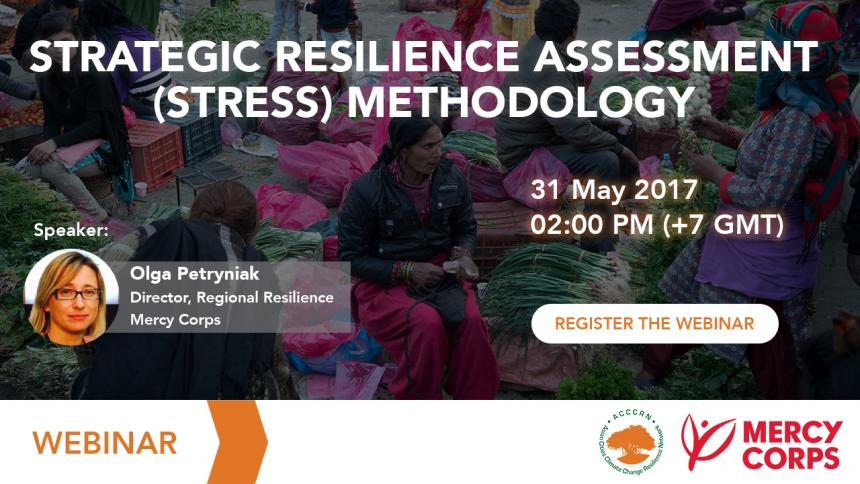Webinar: Strategic Resilience Assessment (STRESS) Methodology

The concept of resilience is a growing theme in urban development, as it helps to factor uncertainties and risks and identify cross-sector capacities to achieve development goals. Mercy Corps defines resilience as “the capacity to learn, cope, adapt and transform in the face of shocks and stresses.” To apply a resilience lens to strategy development or long-term program design, Mercy Corps uses Strategic Resilience Assessment (STRESS) methodology that helps program teams, practitioners, and other relevant stakeholders, to build an understanding of the dynamic social, ecological and economic systems in which communities are embedded.
STRESS employs systems thinking to understand how disturbances and development constraints contribute to changes that affect development outcomes for people and communities.
In Asia, Mercy Corps has applied the STRESS methodology in various programs with different characteristics in Nepal, China, Myanmar, Mongolia, and India.
What is STRESS? How this method will help the resilience practitioners to continually develop better resilience strategies, especially in Asia?
On Wednesday, 31 May 2017, ACCCRN has hosted the webinar where you can learn about STRESS and lessons learned from STRESS implementation in Asia. Olga Petryniak, Director of Regional Resilience Initiatives in Southeast Asia at Mercy Corps, shared the STRESS methodology through online presentation followed by discussion facilitated by Ratri Sutarto, Director of ACCCRN Network.
For further information regarding the topic, please send an email to Olga Petryniak: opetryniak@mercycorps.org.
Watch the Webinar Recording:
ACTIVITY UPDATE
Strategic Resilience Assessment (STRESS) Methodology, Process, and Application
The concept of resilience is a growing theme in urban development, as it helps to factor uncertainties and risks and identify cross-sector capacities to achieve development goals. Mercy Corps defines resilience as “the capacity to learn, cope, adapt and transform in the...RESOURCES
- Webinar Presentation: Strategic Resilience Assessment (STRESS)
- The STRESS Process at Mercy Corps
- Report: Strategic Resilience Assessment in Mongolia
- Report: Strategic Resilience Assessment (STRESS) - Promoting Agriculture, Health and Alternative Livelihoods (PAHAL) Program
- Report: Strategic Resilience Assessment (STRESS) - Sichuan Province, China
- ACCCRN Webinar: Strategic Resilience Assessment (STRESS) Methodology
